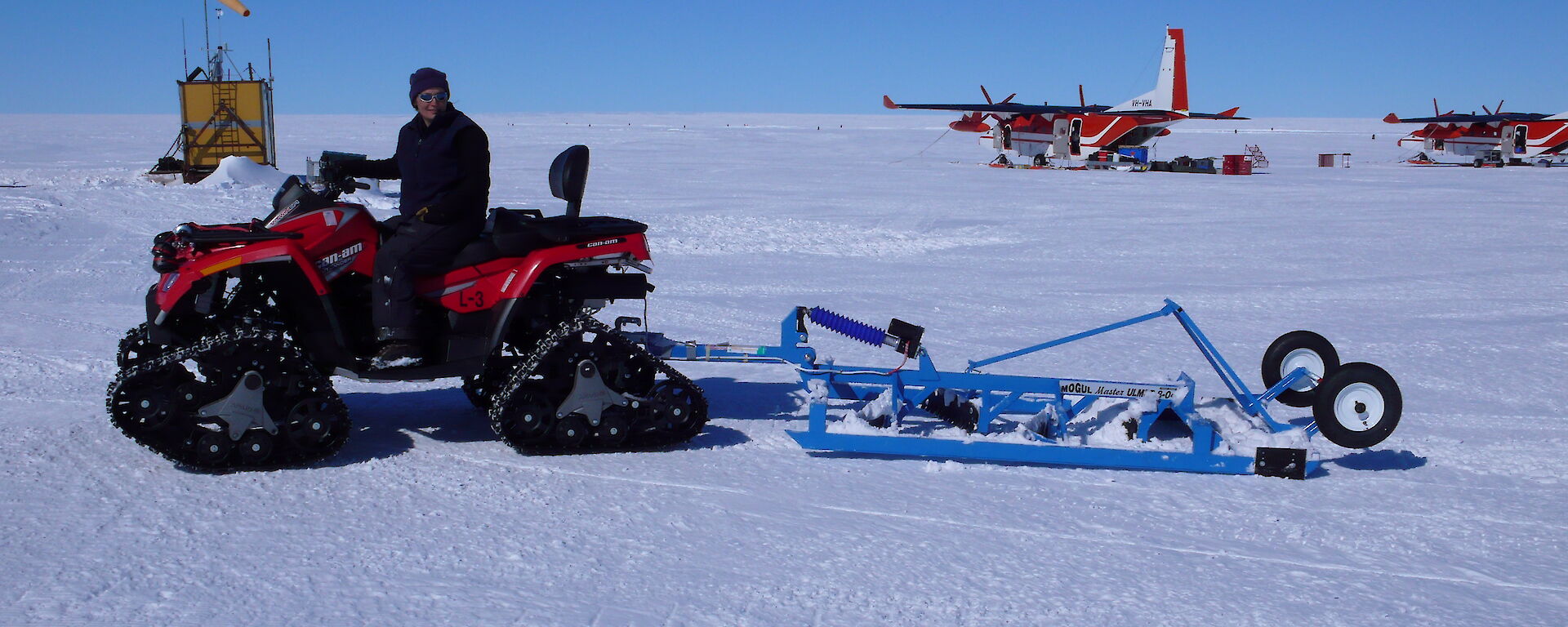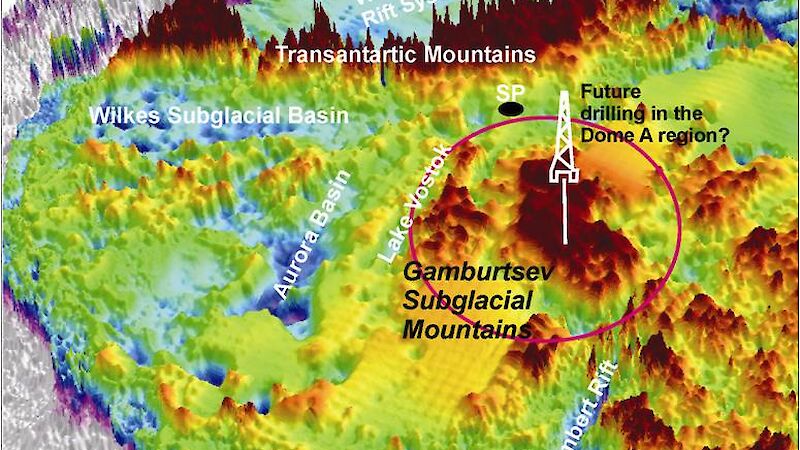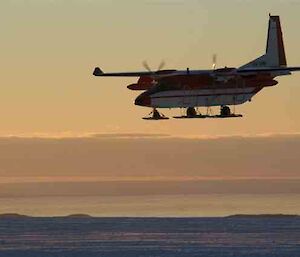A mysterious mountain range under the ice in the heart of Antarctica is the focus of a major field project involving the Australian Antarctic Division this season.
The Antarctica’s Gamburtsev Province (AGAP) project is a multinational, high-tech adventure in which teams of scientists, engineers, pilots and support staff from the United Kingdom, United States of America, Germany, Australia, Japan and China have joined forces to mount one of the most scientifically, technically and physically ambitious Antarctic projects ever.
Glaciologist Dr Ian Allison says that the aim of the project is to uncover the secrets of the enigmatic Gamburtsev mountain chain, which is buried beneath four kilometres of ice and which may be the birthplace of the massive East Antarctic Ice Sheet.
“The Gamburtsev mountain range is fascinating in terms of its possible geological origins and role in formation of the ice sheet. We know very little about this region in the heart of Antarctica as it is so inhospitable and difficult to get to.
“Computer models have indicated that there’s a strong possibility that these mountains are the birthplace of the East Antarctic Ice Sheet. It is thought that over 30 million years ago ice began to form around the peaks, eventually burying the range and spreading beyond.
“This makes it one of the best places to hunt for a location for ice-core drilling campaigns into Antarctica’s oldest ice and to discover clues to past, present and future climate change,” said Dr Allison.
A multinational team of scientists will use sophisticated airborne radar and other tools and techniques to virtually “peel away” more than four kilometers of ice and examine the makeup and origins of the mysterious Gamburtsev Mountains.
The Australian Antarctic Division is contributing a range of resources to AGAP, including personnel, food, vehicles, medical and communications equipment, and a C212 aircraft and helicopters to assist with the logistics of the project. One of two AGAP base camps will be located 530 nautical miles from Australia’s Davis station.
Working every day at extreme altitudes, in 24 hours of sunlight and temperatures as low as minus 40 degrees Celsius, the AGAP team hope that their technology will help them to discover whether the Gamburtsevs were born of tectonic activity in Antarctica or date from a period millions of years ago, when Antarctica was the centre of an enormous supercontinent.
The AGAP project is one of the largest staged during the global scientific deployment known as the International Polar Year (IPY), the largest coordinated international scientific effort for 50 years.
Dr Allison, who is co-chair of the Joint Committee responsible for the scientific planning, coordination, guidance and oversight of the IPY, says that the IPY provides an international mechanism for coordinating this multinational project that might otherwise have been very difficult, if not impossible, to mount successfully.
“Through more than 200 Arctic and Antarctic research projects worldwide, IPY involves 50,000 people, including scientists, students and support staff from more than 60 nations.
“This project could never be undertaken by one nation alone. The framework that the IPY has provided for international collaboration on both science and logistics elements has been essential for ensuring the viability of the AGAP project.
“This collaborative project is an excellent example of how national Antarctic programs can work together to support and deliver the vital research that will answer fundamental scientific questions about our world,” said Dr Allison.





